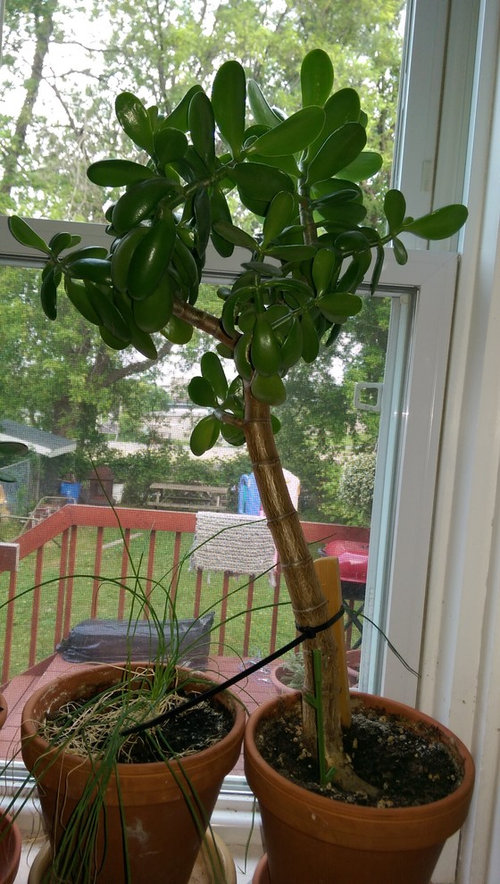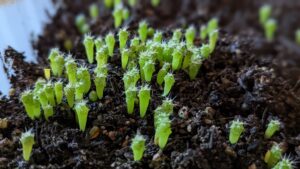Jade plants, scientifically known as Crassula ovata, are beloved houseplants known for their resilience and aesthetic appeal. However, as these succulent denizens of our homes grow, they can sometimes exceed desired heights. When your jade plants become unwieldy and too tall, it’s essential to take definitive steps to bring them back into an appropriate size while maintaining their health and vitality.
Understanding the Growth Patterns of Jade Plants
To effectively manage a jade plant’s height, one must first understand its growth pattern. These succulents are characterized by a woody structure and fleshy leaves, which can lead to elongated stems if insufficient light is available. Jade plants are phototropic, meaning they will reach for available light. This natural tendency can result in leggy growth, particularly in low-light conditions. The ideal height of a jade plant generally ranges between 12 and 24 inches, depending on preferences and the space available.
When jade plants become excessively tall, they may begin to lose their bushy appearance. Instead, long, spindly stems may appear, which can detract from their aesthetic value. Regularly assessing the light conditions and adjusting their placement can mitigate excessive elongation. Ideally, jade plants should receive at least four to six hours of direct sunlight daily.
Pruning Techniques: Bringing Your Jade Plant Back to Size
Pruning is one of the most effective ways to manage the height of your jade plant. This process not only controls their size but also promotes healthy growth and improves airflow within the plant. Here are some highlights of proper jade plant pruning:
1. Tools Required: Use clean and sharp pruning shears or scissors to ensure clean cuts. It’s crucial to avoid damaging the plant, as jagged cuts can lead to infection or disease.
2. Timing: The best time to prune jade plants is during their active growth period, which usually occurs in spring and summer. Pruning during these seasons allows the plant to recover quickly and encourages new growth.
3. Cutting Techniques: Identify the stems that are excessively long or leggy. Trim them back to a length that maintains a balanced appearance. Generally, one should cut just above a leaf node. This encourages new growth from that point and helps maintain the plant’s fullness.
4. Encouraging Branching: To transform a tall jade plant into a bushier specimen, prune the top stems more aggressively. This prompts lateral buds to sprout, allowing the plant to fill out and reduce its height. Consistent maintenance can lead to a more compact and robust jade plant over time.
Repotting: A Dual Purpose of Space and Height Management
Another strategy to consider when managing the height of succulent jade plants is repotting. While this process may seem more labor-intensive, it offers additional benefits beyond just height control.
1. Choosing the Right Container: Opt for a pot that provides adequate space for growth while preventing excessive height. A well-draining succulent potting mix is essential. Additionally, select a pot that is wider than it is deep; this encourages lateral growth over vertical growth.
2. Removal and Care: Carefully remove the jade plant from its current container, gently shaking off the old soil. Be mindful of the roots, ensuring that you do not damage them in the process. Inspect the root system for any signs of rot and trim back any unhealthy roots before replanting.
3. Soil Considerations: When repotting, using fresh soil can offer added nutrients that bolster the plant’s health. Ensure that the new soil is well-draining to prevent waterlogging, which is detrimental to jade plants.
4. Height Management: Tapering the root system by trimming back excessively long roots can also help control the overall height of the plant. A well-trimmed root system encourages the plant to focus more on lateral growth and less on vertical aspirations.
Encouraging Healthy Growth Through Environmental Adjustments
In addition to physical modifications such as pruning and repotting, environmental changes can significantly influence jade plant height. The aesthetics and health of your jade plant are intimately tied to its environmental factors.
1. Light Conditions: As mentioned previously, adequate lighting diminishes the tendency for jade plants to become leggy. Reassess their placement in your home. If they’re not getting enough light, consider relocating them to a brighter location or supplementing with grow lights if natural light is insufficient.
2. Watering Regimen: Over-watering can exacerbate leggy growth, leading to weak stems. Ensure a proper watering schedule based on the plant’s need—allowing the top inch of soil to dry out between waterings can help the plant maintain a sturdy structure.
3. Nutrient Balance: Balanced fertilization can also aid in height management. A diluted, balanced fertilizer can provide essential nutrients that promote robust growth. However, over-fertilization can lead to excess foliage, exacerbating height issues. It is advised to fertilize sparingly during the growing season.
4. Temperature and Humidity: Jade plants thrive in temperatures ranging from 65°F to 75°F. Avoid placing your plant in drafty areas or near heating vents, which can stress the plant and potentially lead to uneven growth.
In conclusion, managing the height of your jade plants requires proactive measures that combine pruning, repotting, and environmental adjustments. By understanding your plant’s growth patterns and adjusting care practices, you can maintain the health of your jade plant while ensuring it remains an attractive accompaniment to your indoor space. With diligent attention, your once-too-tall jade plants can return to a charming and manageable stature, enhancing the beauty of your home.





Leave a Comment